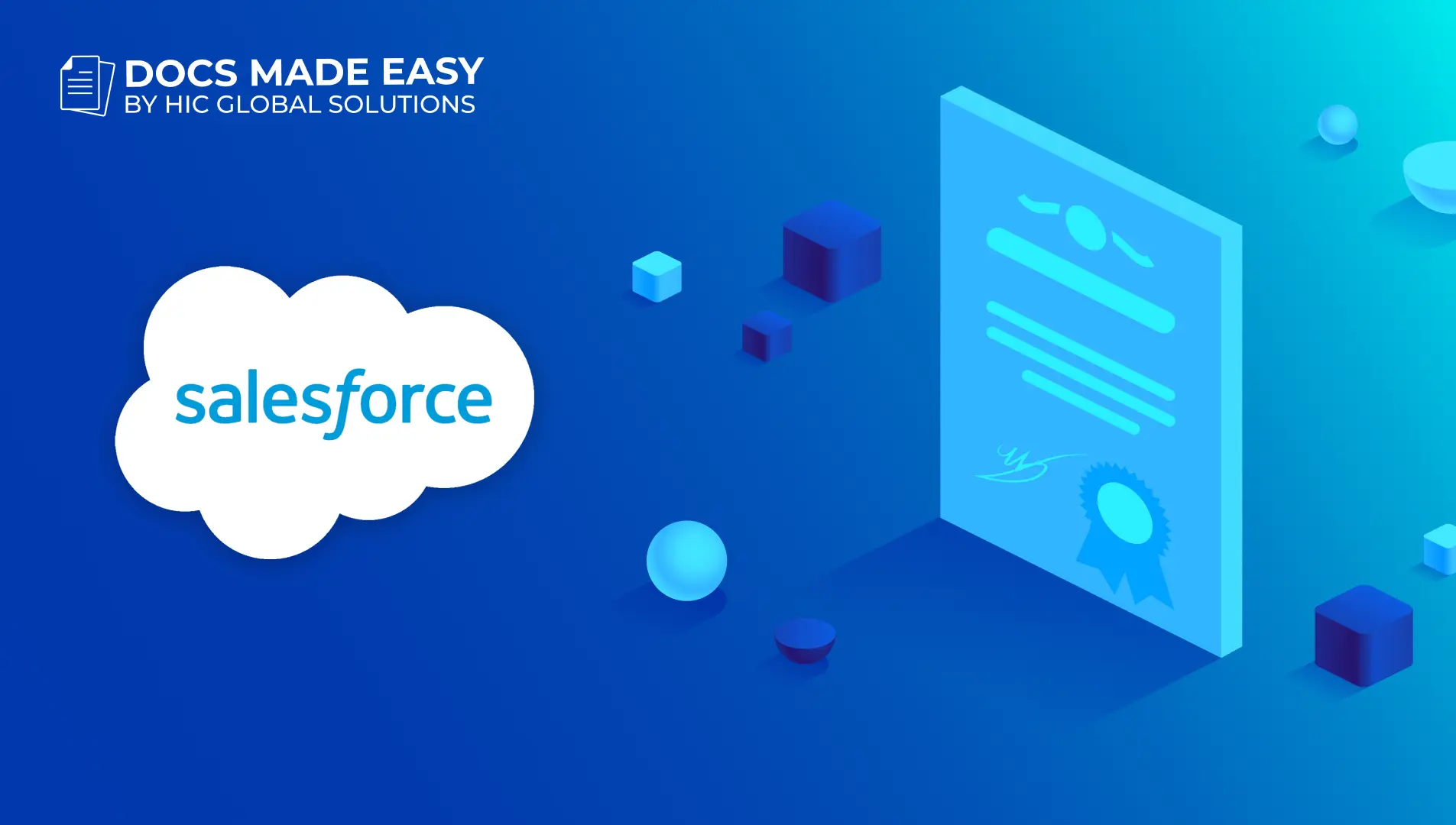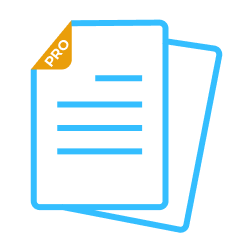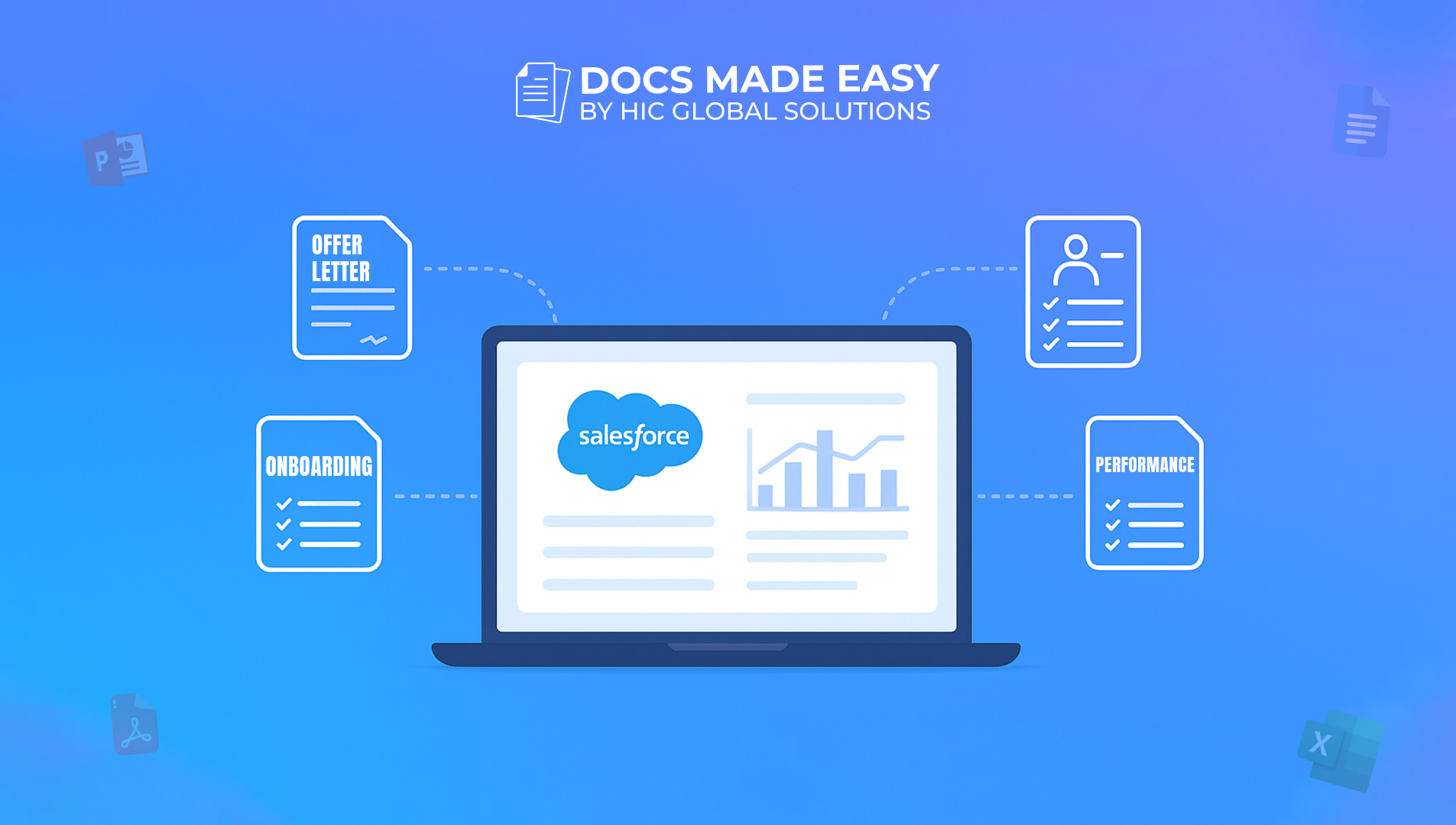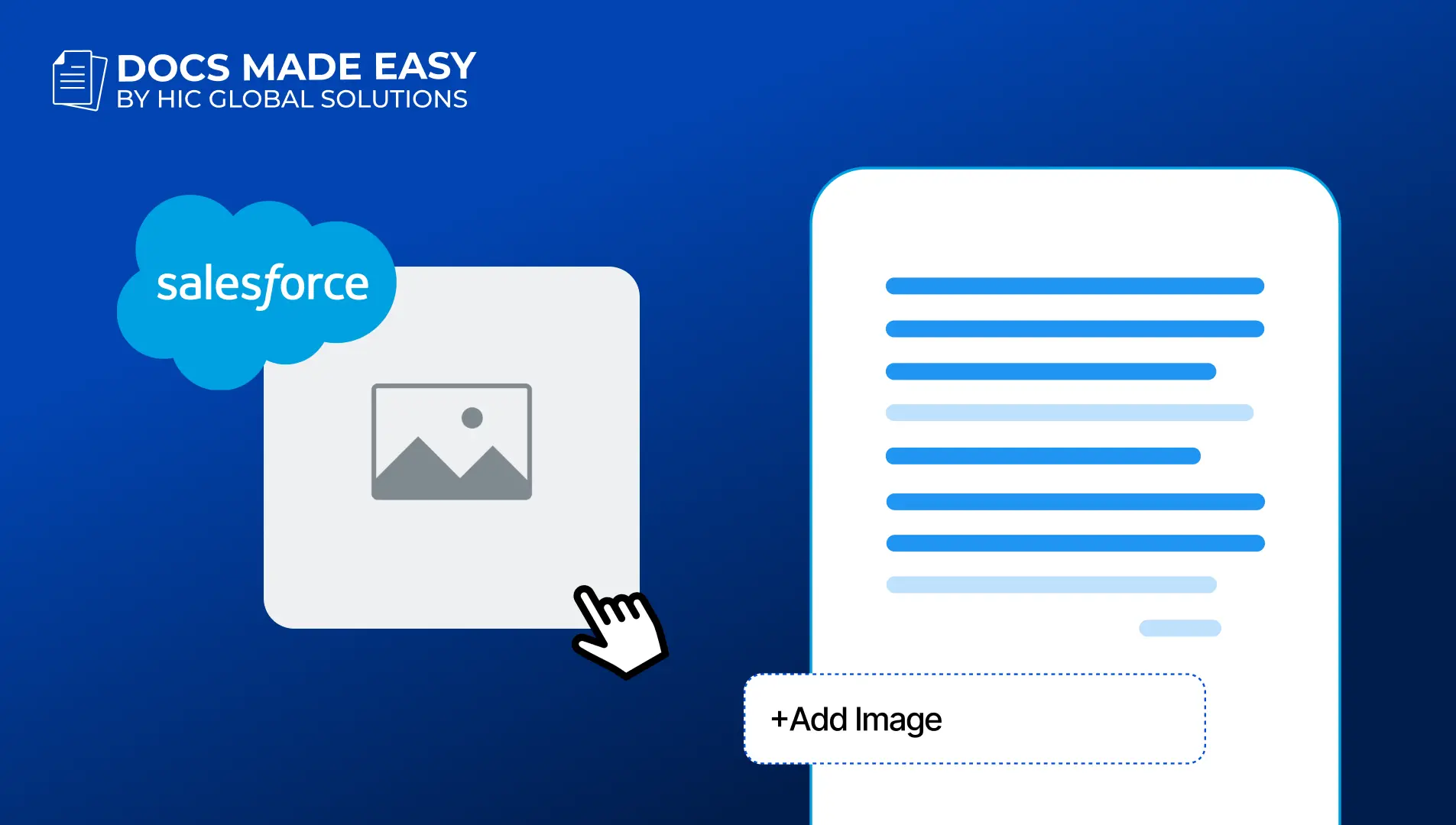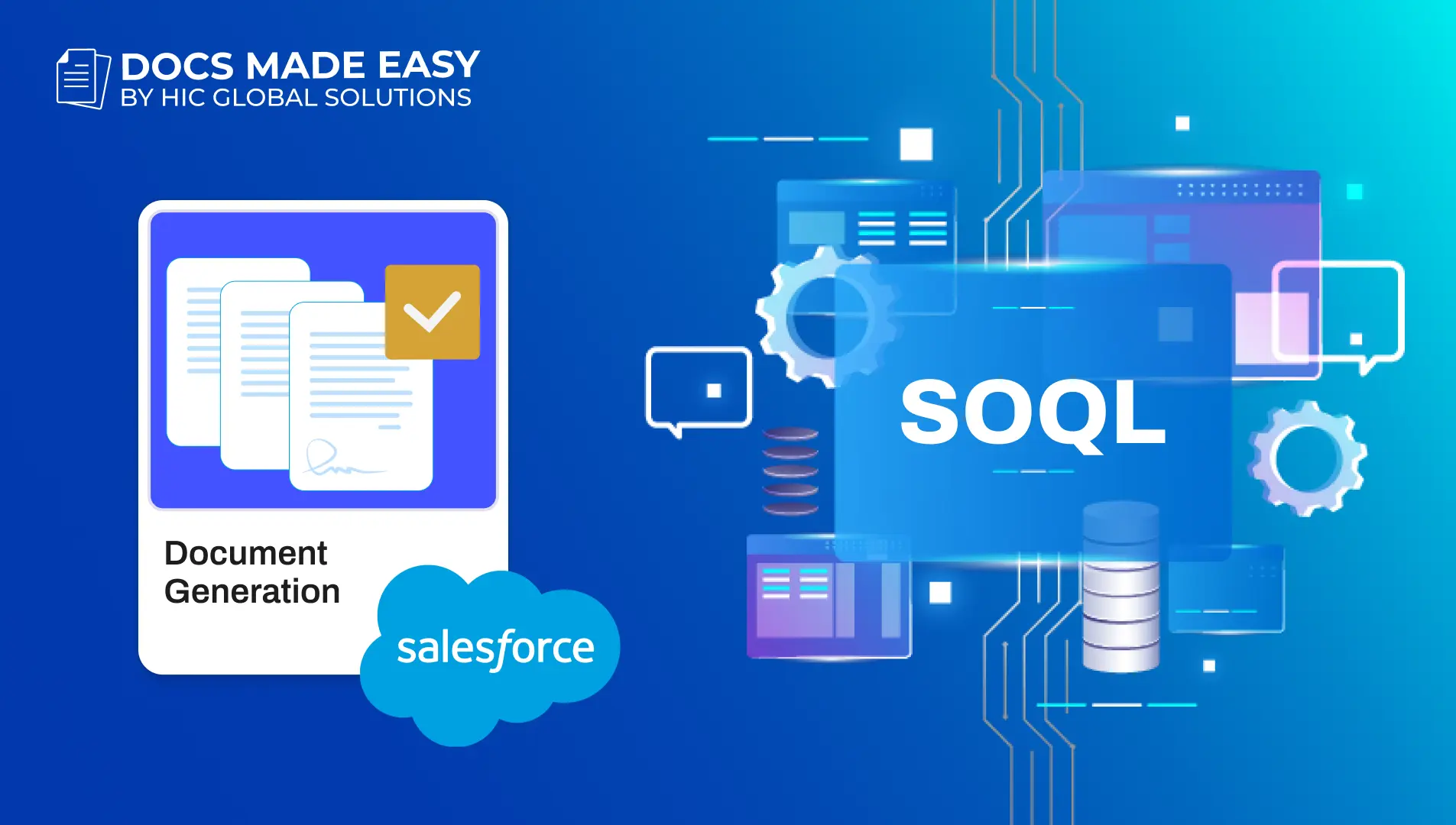HR teams today have more on their plates than ever. Beyond hiring and onboarding, HR professionals are responsible for managing employee performance, keeping records compliant, generating documents, and ensuring smooth communication across the organization. The manual processes involved in these tasks are not only time-consuming but also prone to errors and inconsistencies. That’s where HR workflow automation in Salesforce comes into play.
By automating repetitive HR tasks, organizations can free up valuable time for their HR teams to focus on strategic initiatives and employee engagement. This blog explores everything you need to know about Salesforce HR automation, its benefits, key workflows you can automate, best practices, and tools to get started.
What Is HR Workflow Automation?
HR workflow automation is the process of using software tools to automate repetitive, time-intensive HR tasks. Instead of spending hours on manual tasks like document generation, approval tracking, and scheduling, HR teams can rely on Salesforce automation to handle these processes efficiently.
With Salesforce HR automation, you can create intelligent workflows that streamline HR operations, such as:
- Automatically generating offer letters
- Scheduling onboarding tasks for new hires
- Sending reminders for performance reviews
- Storing and managing documents securely
By digitizing these tasks, HR teams can reduce human errors, maintain compliance, and deliver a better employee experience.
Why Automate HR Workflows in Salesforce?
Manual HR processes are not only slow, but they can also be error-prone. By embracing HR workflow automation, organizations benefit from:
- Time Savings
Automating tasks like document creation, approvals, and reminders drastically reduces the time spent on repetitive processes. For instance, generating an offer letter manually can take hours; with automation, it’s done in minutes. - Error Reduction
Manual processes can lead to inconsistencies, such as incorrect employee information or missed approvals. Salesforce HR automation ensures that all data is accurate and standardized across workflows. - Improved Employee Experience
Automation makes onboarding and performance reviews smoother and faster. New hires receive timely updates, managers are reminded of review deadlines, and employees feel valued due to streamlined processes. - Compliance and Security
HR teams handle sensitive employee information. Salesforce workflows help maintain compliance by securely tracking approvals, storing documents, and creating audit trails automatically, while supporting Type II, HIPAA, GDPR, and SOC 2 compliance requirements. - Strategic HR Focus
By removing the burden of repetitive tasks, HR teams can spend more time on high-value activities like workforce planning, employee engagement, and talent development.
Key HR Processes You Can Automate in Salesforce
Let’s explore the most impactful HR workflows you can automate using Salesforce.
Automated Offer Letters in Salesforce
Creating offer letters manually is tedious and error-prone. Salesforce HR automation allows HR teams to generate automated offer letters that pull candidate data such as name, position, salary, and start date directly from the system into pre-approved templates.
Benefits of automated offer letters:
- Accuracy: Templates reduce human errors and ensure consistent formatting.
- Speed: Offer letters can be sent instantly after approvals.
- Professionalism: Each letter follows the company’s branding and compliance standards.
Example Workflow:
- Candidate data entered into Salesforce.
- HR triggers an automated workflow to populate the offer letter template.
- Letter sent for manager approval.
- Final offer sent to the candidate with e-signature options.
Automating offer letters ensures candidates experience a seamless hiring process while HR avoids the repetitive task of manual document creation.
Employee Onboarding Automation
A smooth onboarding process is essential for employee satisfaction and retention. With Salesforce Employee onboarding automation, you can ensure new hires start their journey on the right foot.
Automated onboarding features include:
- Sending welcome emails and essential documentation automatically.
- Assigning tasks like training modules or compliance forms without manual follow-up.
- Scheduling reminders for managers to conduct check-ins.
- Creating a structured onboarding timeline for employees.
Benefits:
- Consistency: Every employee experiences the same structured onboarding.
- Efficiency: No manual follow-up is required.
- Employee Engagement: Timely communication makes new hires feel welcomed and supported.
For example, an onboarding workflow can automatically assign IT setup tasks, schedule introductory meetings, and notify managers when each task is complete. This reduces administrative overhead and ensures that nothing is overlooked.
Performance Appraisal Automation
Performance reviews are critical for employee development but are often cumbersome when done manually. Performance appraisal automation in Salesforce streamlines this process and ensures fairness, timeliness, and transparency.
Key automation features:
- Automatic reminders for managers and employees to complete reviews.
- Consolidation of self-assessments, peer reviews, and manager feedback in one platform.
- Generation of performance reports with a single click.
- Tracking of goals and achievements in real-time.
Benefits:
- Timely feedback and recognition improve employee morale.
- Managers can focus on coaching rather than administrative tasks.
- HR maintains a clear, auditable record of appraisals for compliance and reporting.
Automated performance appraisals also allow organizations to use data-driven insights for promotions, rewards, and career development planning.
Salesforce Document Generation and Compliance
HR manages countless documents, including employment contracts, policy acknowledgments, and legal compliance forms. Salesforce document generation tools simplify this by automating creation, routing, and secure storage.
Automation features include:
- Auto-generation of contracts and HR forms using templates.
- Routing documents for approvals via e-signatures (e.g., DocuSign, Adobe Sign).
- Maintaining secure, audit-ready records for compliance purposes.
Benefits:
- Minimizes human error and maintains consistency.
- Reduces turnaround time for approvals.
- Ensures legal compliance and secure document management.
Document automation is essential for scaling HR operations and reducing administrative burdens, especially in organizations with high volumes of hires or complex compliance requirements.
Employee Offboarding Automation
While onboarding is crucial, employee offboarding automation is equally important. Salesforce HR automation ensures that departing employees complete all exit procedures efficiently.
Automated offboarding tasks:
- Termination checklist for returning company assets.
- Revoking system access automatically.
- Generating final settlement documents.
- Scheduling exit interviews and feedback collection.
Automated offboarding ensures legal compliance, protects company assets, and provides a structured experience for departing employees.
Best Practices for Salesforce HR Workflow Automation
To maximize the benefits of HR workflow automation, follow these best practices:
Use Dynamic Templates
Automatically insert employee data into documents to avoid errors and ensure consistency.
- Keep Workflows Simple
Overly complex automation rules can cause delays and confusion. Design clear, intuitive workflows. - Integrate E-Signatures
Use DocuSign or Adobe Sign for fast, paperless approvals and secure record-keeping. - Audit Regularly
Ensure that automated workflows reflect current HR policies and compliance requirements. - Prioritize Employee Experience
Automation should enhance, not replace, personal interactions. Use it to remove friction, not human connection. - Measure Effectiveness
Track metrics like turnaround time for approvals, onboarding completion rates, and document accuracy to optimize workflows.
Salesforce Document Generation Apps to Enhance HR Workflow Automation
Several apps seamlessly integrate with Salesforce to automate HR processes, helping teams save time, maintain compliance, and improve efficiency. Here’s a look at some of the top tools and what they can do for HR:
- Docs Made Easy
Docs Made Easy helps HR teams automatically generate documents such as offer letters, employment contracts, appraisal reports, and onboarding forms. It reduces manual effort by using smart templates and integrates with Salesforce workflows for approvals and notifications. - Conga
Conga streamlines complex document creation and distribution. HR teams can generate contracts, policy acknowledgments, or batch reports, ensuring formatting consistency and automated approval routing. - S-Doc
S-Doc allows HR departments to merge Salesforce data into complex documents automatically. It supports dynamic templates for contracts, appraisal letters, and compliance reports, reducing manual document preparation. - PDF Butler
PDF Butler automates the creation of PDF documents directly from Salesforce records. Perfect for recurring HR reports, contracts, and employee communications, it helps maintain accuracy and efficiency across HR workflows.
Real-Life Benefits of Salesforce HR Automation
Companies that implement Salesforce HR automation often experience measurable improvements:
- Reduced administrative workload by 40–60%
- Faster onboarding with reduced manual follow-ups
- Improved compliance through audit-ready records
- Enhanced employee satisfaction through timely communication and structured workflows
- Data-driven HR decisions via centralized reports and analytics
Challenges to Consider
While the benefits are significant, HR automation also comes with challenges:
- Change Management: Employees may resist automated processes initially. Proper training is essential.
- Workflow Design: Overcomplicated automation rules can create bottlenecks. Start simple and expand gradually.
- Integration: Ensuring that Salesforce connects smoothly with other HR tools is critical.
Proper planning, training, and phased implementation can help organizations overcome these challenges effectively.
The Future of HR Automation with Salesforce
HR automation is evolving with AI and machine learning capabilities. Salesforce is integrating intelligent features that allow predictive analytics, automated recommendations for talent management, and smarter workflow optimization.
Future trends include:
- AI-powered candidate screening and interview scheduling
- Predictive performance analytics for career development
- Automated succession planning workflows
- Smart alerts for HR compliance and policy updates
These innovations will make Salesforce HR automation not just a tool for efficiency, but a strategic asset for HR departments.
Conclusion
HR workflow automation in Salesforce isn’t just a convenience- it’s a necessity for modern HR departments. By automating tasks like offer letters, onboarding, performance appraisals, document generation, and offboarding, organizations save time, reduce errors, and enhance the employee experience.
Implementing Salesforce HR automation allows HR teams to focus on what truly matters: building a motivated, engaged, and high-performing workforce. Tools like Docs Made Easy and Salesforce Flow make document generation and workflow management seamless, ensuring HR teams can operate at peak efficiency while maintaining compliance and data security.
Investing in automation today prepares organizations for a more agile, productive, and employee-focused future.
Ready to make HR processes effortless? Install Docs Made Easy today and experience seamless automated document generation for offer letters, onboarding, appraisals, and more.
Frequently Asked Questions
Related Blogs
